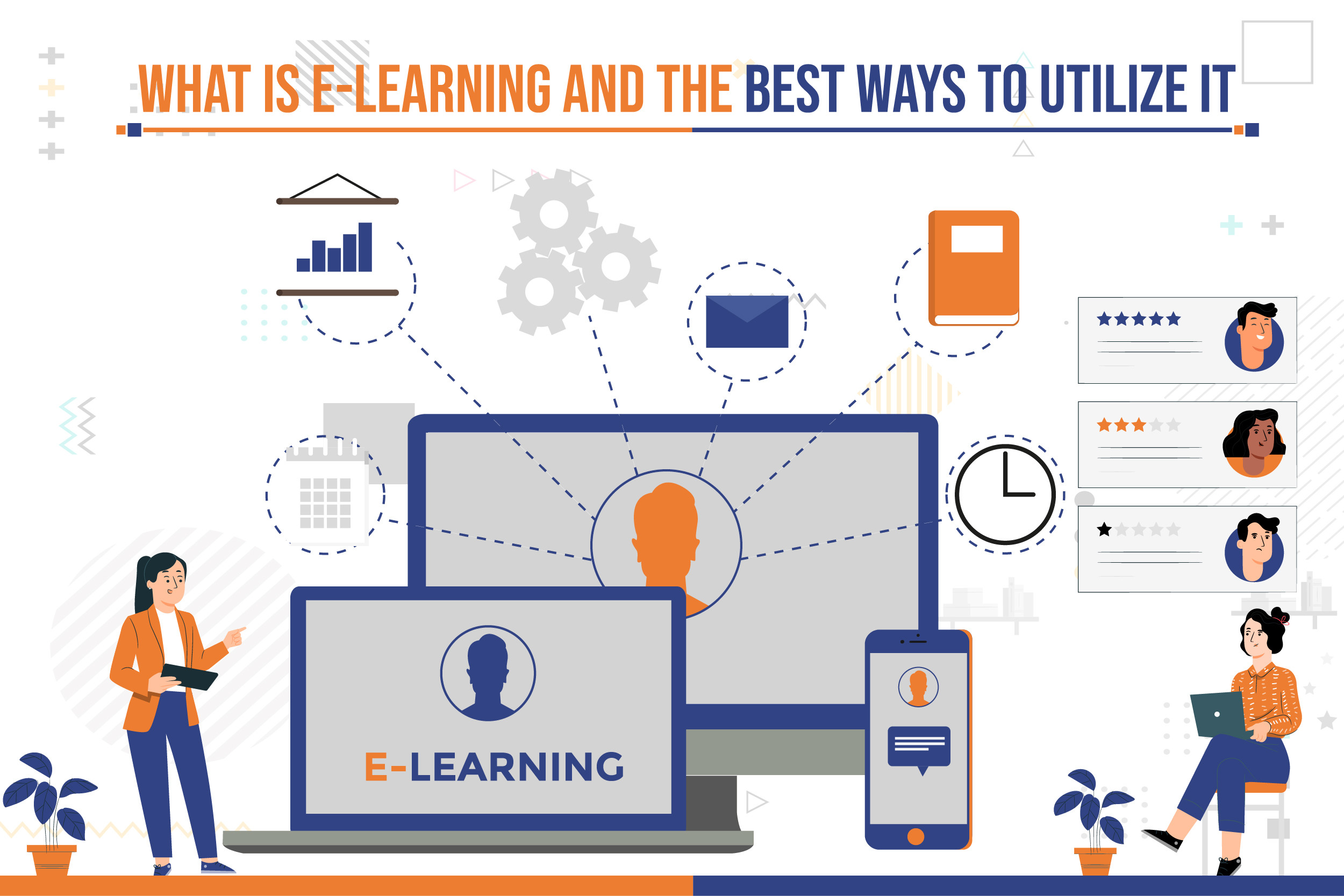
What Is E-Learning And The Best Ways To Utilize It?
E-learning is a broad range of skills and practices that are used to improve the performance of individuals and organizations. The e-learning market is expected to grow from $20 billion today to more than $39 billion by 2023. Companies are shifting toward a more cost-effective and convenient way to train their employees and high employee retention is a result of using e-learning sessions.
E-learning has taken the world by storm and is quickly becoming a widely used approach at work. Employees have become so accustomed to the benefits that come their way from E-learning that they are almost oblivious to this altered view of their working world. As a result, the technology is increasing in popularity with over 12 million people in 2017 having an E-learning subscription. The number of E-learning professionals grew from 525,000 in 2005 to 807,000 in 2013 (Robert Hatton and Steven Bodlean).
Moreover, E-Learning is a much easier means of teaching and acquiring new employees and offering them vital corporate training programs such as Leadership Training. It's also a great way for companies to develop relationships and build brand loyalty. Also, e-learning enhances employee productivity and improves effectiveness.
Some Best Ways To Utilize E-Learning Effectively
E-learning is training delivered using technology. It can be about anything, which means that organizations can choose from many different types of e-learning. It allows personalized learning experiences, which leads to greater employee engagement in training and buy-in. Let’s have a look at some popular ways jotted down below with the help of which E-learning can be effectively utilized:
1. Understand Your Subject Matter Inside And Out
There is no set amount of time that must be spent developing the perfect piece of content, but one thing is for sure: you must take your time to thoroughly study the topic before offering it to your audience. For example, if you are planning to provide training on leadership, you have to curate the perfect Leadership Management Course to ensure an engaging learning experience. The justification is straightforward: Not all learners process information in the same manner and some may require further illustration in the shape of examples or other evidence.
2. All Learning Styles Should Be Accommodated In The Given Online Courses
Every learning type should be taken into account while designing the online course. For instance, although one learner could benefit from visual materials of assignments and courses that are aesthetically appealing, another student might be better able to retain material when it is provided in textual format. These varied learning styles are usually taken into consideration when developing lessons for a successful e-learning course or a critical Leadership Development Program.
3. Encourage Contact
It should be possible for instructors and learners to communicate freely. Coaches should also identify the times they like to communicate via each method. This will guarantee that standards are adhered to and that the learner gets the assistance or guidance they seek. Additionally, learners should be able to reach a staff member frequently if necessary and can access the IT support personnel for the systems. Discussion boards, social media, chats, email, video conferencing, and other VoIP technologies are a few examples of how learners may engage with their trainers.
4. Ensure Seamless And Completely Functional Learning Platform
The sites’ and the e-learning platform's functionality and usability should come first while developing them. Instead of having to deal with technical problems that may occur from improperly designed sites and systems, learners may concentrate on the coursework with the help of a well-organized and user-friendly web-based learning platform.
5. Every Learner Registered Should Have Access To The Course Materials
Learners must have access to course materials like the syllabus, especially at the start of the program. The learner will be able to utilize the syllabus as a reference during the whole course and will be sure to know which lessons will be covered throughout. Additionally, it gives trainers a useful road map and aids in organizing their class ideas. Be it a Leadership Management Course or any other vital corporate training course, it’s crucial to provide a structured curriculum for the convenience and interest of the learners.
6. Establish And Convey Clear Objectives
We must emphasize that teams' inability to meet goals is often due to a lack of clear instructions on how to do so. What will be done, when it will be done, and what is required for job completion should be covered in every course's curriculum. Therefore, it is crucial that all Trainers establish and convey to their learners’ clear goals in a way that they gain confidence that they will understand the course as well as will be able to implement it.
Ending Lines
E-learning has provided to be comprehensive economic development that has made employees more accountable. It is cost-effective, customizable, and accessible to all employees at any time of the day and from any place. E-learning reduces absenteeism, and attrition rate and improves employee performance. It also provides organizations with quantifiable ROI, which proves its worth for a company.
Additionally, eLearning opens the door to greater learner cooperation, improved communication with instructors, and a wealth of resources with increased productivity in the learning process. When the entire world is changing, it is wise to employ educational strategies that are good for successful learning, such as eLearning.
